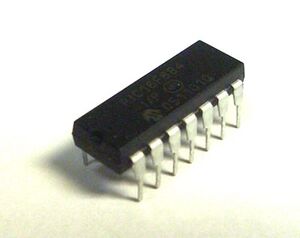Digital Circuits
Digital Circuits
Unlike analogue circuits, elements in digital logic circuits are in states of either "high" or "low" (usually corresponding to "true" and "false", or "1" and "0"). In most cases, highs and lows are exhibited as voltage levels on the input and output pins of the integrated circuit. Depending on the technology, this voltage level will vary.
For Transistor-Transistor Logic (TTL) circuits, which is the most popular kind used in electronic projects, high is anything above 2V, and low is anything below 0.7V. In these circuits, it is very common to use +5V for high and ground for low. If a pin is not connected (neither connected to the high voltage nor grounded), then it is floating. TTL chips usually go high by themselves when floating, but don't count on it. Inputs should never be floating; always have them connected to something.
Integrated circuits come in different packages. The package refers to the type of exterior casing that the connects the actual integrated circuit chip to its input and output pins. A common type of package is the Dual-In-Line Package, or DIP. This package contains a rectangular box with two rows of pins coming out of the long edge. The number the succeeds "DIP" denotes the number of pins in package. The package will often have an indentation or dot at one end to help identify the pins.
Terminology
Active Low Input
An active low input means that it is "on" when in input is low, and "off" when the input is high. In schematic diagrams, it is often denoted by a "bubble" at the input pin.
High
High usually corresponds to the binary "1," the "on" state, and "true" or "1" in Boolean logic.
Low
Low usually corresponds to the binary "0," the "off" sate, and "false" or "0" in Boolean logic.
